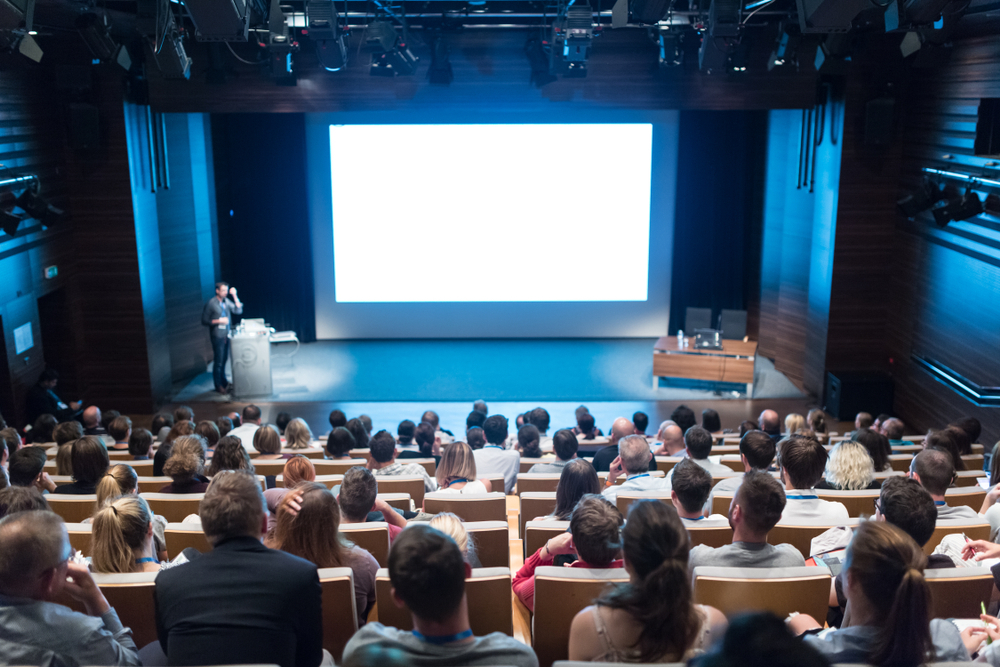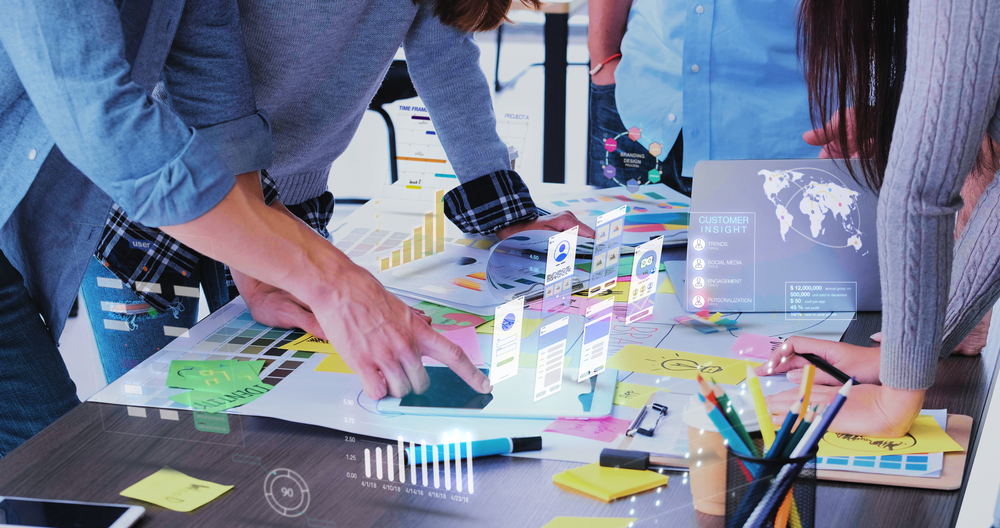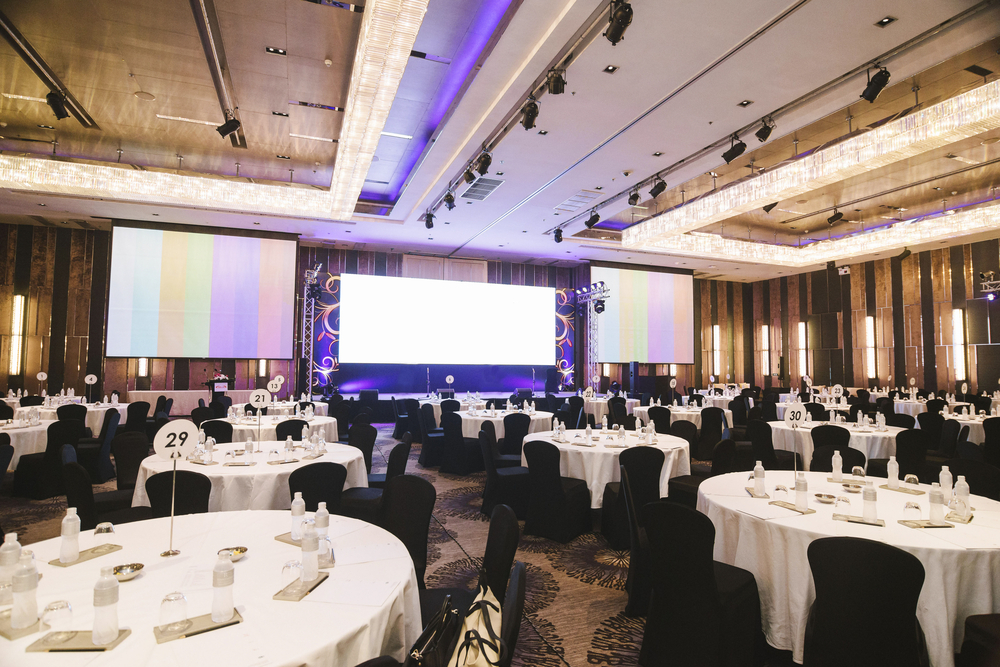
Creating Engaging Spaces for Conferences and Exhibitions is about exciting events. Imagine walking into a place that grabs your attention and makes you curious. We’re not just talking about regular meetings and exhibitions but about making memories that stick with you.
Let’s get to the main point. Have you ever been to an event that felt boring? Or have you ever walked into a space that didn’t inspire you? We get how frustrating that can be. Let’s explore how elements like interactive elements, clean lines, and bold colours are crucial in this process. You’ll learn how to make your event space shine and leave everyone impressed.
How can we Create an Immersive Experience for Attendees?
Creating an immersive experience for attendees at conferences and exhibitions involves a blend of innovative design, technology, and an understanding of audience engagement. Let’s dive into some mind-blowing strategies that transform your environment into a paradise!
- Leverage Technology: Use AR, VR, and interactive touchscreens to transform passive experiences into engaging, hands-on interactions.
- Thematic Design Elements: Employ a cohesive theme throughout all design aspects to create a compelling narrative that resonates with attendees.
- Gamification: Introduce games like scavenger hunts to make the experience enjoyable and encourage exploration.
- Dynamic Spaces: Design adaptable spaces with rotating displays and interactive installations for a dynamic and surprising environment.
- Sensory Experiences: Use multi-sensory elements (visual, auditory, tactile) to create more memorable and engaging experiences.
- Social Interaction Zones: Create comfortable areas for networking and informal discussions to enhance social interaction.
- Personalized Experiences: Utilize data and technology like RFID to offer tailored experiences based on individual interests.
- Engaging Signage: Implement clear, interactive signage for navigation and to enrich the attendee’s journey.
- Content-rich Sessions: Ensure workshops and speaker sessions are interactive and participatory, keeping content engaging.
- Feedback and Adaptation: Collect real-time feedback for immediate improvements and post-event insights for future enhancements.

What are the Key Elements in Designing for Networking Opportunities?
The critical elements in designing networking opportunities include strategic seating arrangements that facilitate interaction, such as round tables and lounge areas for open discussions and informal meetings:
Type of Seating Arrangement
The layout and type of seating arrangement can significantly influence the ease and quality of networking among attendees. Here’s how:
- Round Tables: They create a democratic setting where everyone is equal, facilitating open discussions and group interactions. Round tables are ideal for panel discussions, group brainstorming, or informal gatherings.
- Lounge Areas: These relaxed and comfortable spaces encourage informal and intimate conversations. Lounge areas can be equipped with sofas, armchairs, and coffee tables, creating a homely atmosphere that lowers barriers and encourages open communication.
- High Tables and Stools: These are perfect for casual, stand-and-chat interactions. They are ideal for quick meet-and-greets or discussions that don’t require sitting down for extended periods.
- Modular Furniture: Flexible and reconfigurable furniture allows attendees to adapt the space to their needs, facilitating different interactions – from one-on-one meetings to small group discussions.
Designated Networking Zones
Creating specific networking areas within the event space is crucial for fostering connections. These zones can be strategically placed and designed to enhance interactions:
- Location: These zones are placed in high-traffic areas or near amenities like food and drink stations to attract attendees naturally.
- Comfortable Seating: Comfort is critical in these zones. Ensure various seating options cater to different preferences and group sizes.
- Refreshments: Having a selection of refreshments available can encourage attendees to linger and engage in more extended conversations.
- Ambience: The atmosphere should be welcoming and conducive to conversation. This can be achieved through lighting, colour schemes, and background music’s
- Elements: Incorporating features like digital screens for displaying LinkedIn profiles or live social media feeds can stimulate discussions and connections.
- Privacy Options: While open spaces are great for group networking, providing areas where people can talk privately, like semi-private pods or meeting rooms, can benefit more sensitive or detailed discussions.
- Signage and Branding: Clear signage can guide attendees to these zones, and sponsors can offer branding opportunities, adding value to their participation.

How do we Pay Special Attention to the Target Audience?
To pay special attention to the target audience, it’s essential to understand their preferences and needs. This understanding can influence everything from the exhibition’s theme to the interactive elements.
Tailoring the experience to suit the audience’s interests can significantly enhance engagement. For instance, if the audience is predominantly tech-savvy, incorporating the latest technological innovations in the exhibition design can be highly effective.
How can we Design a Memorable Experience for Potential Customers?
Incorporating unique design elements that stand out can make an exhibition memorable. Below are some ideas:
- Unique and Engaging Design: Use standout design features like interactive installations and innovative layouts to capture attention.
- Personalized Experiences: Tailor the event to align with the specific interests and preferences of the target audience for a more relevant and engaging experience.
- Sensory Engagement: Incorporate multi-sensory elements (visual, auditory, tactile) to create a more immersive and memorable experience.
- Interactive Content: Utilize interactive technologies and content to encourage active participation and deeper engagement.
- Emotional Connection: Craft experiences that evoke emotions, connecting personally to create lasting memories and associations.
Conclusion
In conclusion, designing spaces for conferences and exhibitions requires combining creativity, understanding the target audience, and integrating critical elements like interactive features and engaging designs. By creating an inclusive, immersive, and memorable experience, organizers can ensure that their events attract and captivate their potential customers, paving the way for successful and impactful exhibitions.
City Furnish is an ideal choice for designing engaging spaces at conferences and exhibitions due to their reputation for delivering high-quality, stylish furnishings. Our extensive range of furniture options allows for seamless integration with various themes and designs, ensuring each event space is aesthetically pleasing but also comfortable and functional.

